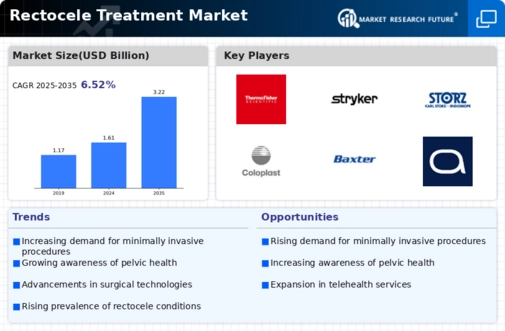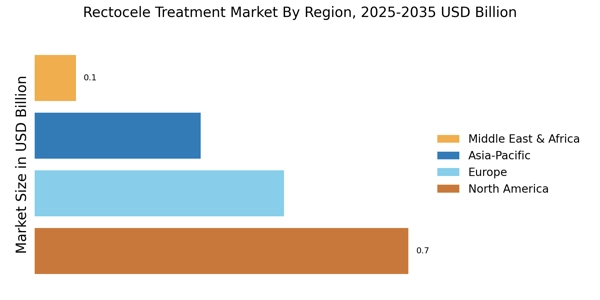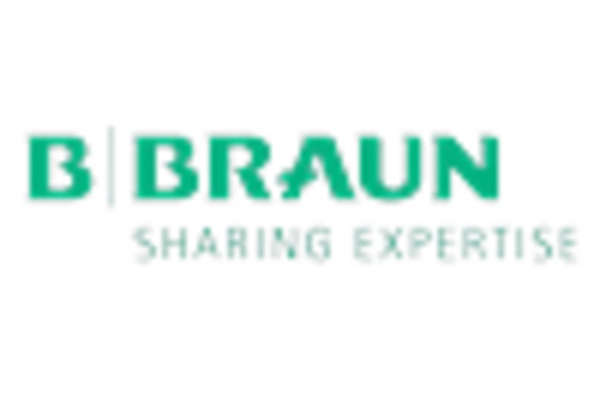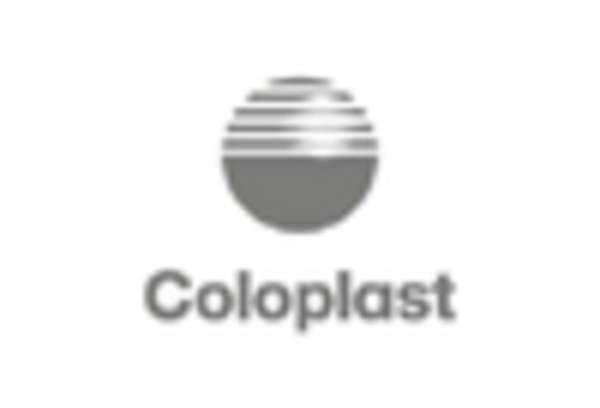Increased Focus on Women's Health
The heightened emphasis on women's health issues is a critical driver in the Rectocele Treatment Market. Advocacy for women's health has led to greater awareness and education regarding pelvic floor disorders, including rectocele. Organizations and healthcare providers are increasingly prioritizing research and resources dedicated to women's health, which has resulted in improved access to information and treatment options. This focus is reflected in the growing number of specialized clinics and programs aimed at addressing pelvic health concerns. As awareness continues to rise, more women are likely to seek treatment for rectocele, thereby expanding the market. The Rectocele Treatment Market stands to benefit from this trend as it aligns with broader initiatives to enhance women's health outcomes.
Advancements in Surgical Techniques
Innovations in surgical techniques are significantly influencing the Rectocele Treatment Market. Minimally invasive procedures, such as laparoscopic surgery, have gained traction due to their reduced recovery times and lower complication rates. These advancements not only enhance patient outcomes but also attract more patients seeking rectocele treatment. The introduction of robotic-assisted surgeries has further refined surgical precision, leading to improved success rates. Market data indicates that the adoption of these advanced techniques is expected to grow, with a projected increase in minimally invasive surgeries by approximately 20% over the next few years. This trend is likely to drive the Rectocele Treatment Market as healthcare facilities invest in new technologies to meet patient demands.
Rising Incidence of Rectocele Cases
The increasing prevalence of rectocele cases is a notable driver in the Rectocele Treatment Market. Factors such as aging populations and lifestyle changes contribute to this rise. According to health statistics, the incidence of rectocele is particularly high among women who have undergone childbirth, with estimates suggesting that up to 50% of women may experience some form of pelvic floor disorder. This growing patient population necessitates the development and availability of effective treatment options, thereby propelling the Rectocele Treatment Market forward. As awareness of pelvic health issues increases, more individuals are seeking medical advice, which further stimulates demand for rectocele treatments. The market is likely to expand as healthcare providers focus on addressing this prevalent condition.
Growing Demand for Non-Surgical Options
The rising demand for non-surgical treatment options is reshaping the Rectocele Treatment Market. Patients increasingly prefer conservative management strategies, such as pelvic floor exercises, physical therapy, and the use of pessaries. This shift is driven by a desire to avoid surgical interventions and the associated risks. Market Research Future indicates that non-surgical treatments account for a significant share of the rectocele treatment market, with an estimated 30% of patients opting for these alternatives. As healthcare providers recognize the importance of offering a range of treatment modalities, the Rectocele Treatment Market is likely to expand to include more non-invasive options, catering to patient preferences and improving overall satisfaction.
Technological Integration in Healthcare
The integration of technology in healthcare is transforming the Rectocele Treatment Market. Telemedicine and digital health platforms are facilitating remote consultations and follow-ups, making it easier for patients to access care. This technological advancement is particularly beneficial for those who may have mobility issues or live in remote areas. Additionally, the use of electronic health records (EHR) allows for better tracking of patient outcomes and treatment efficacy. Market data suggests that telehealth services have seen a surge in utilization, with a projected growth rate of 25% in the coming years. This trend is likely to enhance patient engagement and satisfaction, ultimately driving the Rectocele Treatment Market as more individuals seek convenient and accessible treatment options.


















Leave a Comment